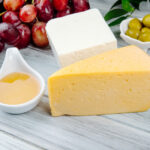Introduction to Grouse Cheese and Its Unique Qualities
Grouse cheese is known as an uncommon and specialty-style cheese that attracts curious food lovers who enjoy tasting rare and flavorful dairy products. It is often appreciated for its rich aroma, slightly game-like hints, and creamy yet firm texture. Many people compare it to artisanal cheeses that take inspiration from natural and traditional food methods, giving it a unique place in modern kitchens.
Those who enjoy strong flavors often describe grouse cheese as bold, earthy, and memorable. It offers an identity that sets it apart from standard supermarket cheese varieties, making it a great ingredient for people who enjoy gourmet-style cooking. Because of its distinct character, grouse cheese is often used in slow-cooked dishes, luxury sandwiches, and creative restaurant menus.
History of Grouse Cheese and Its Origins
The history of grouse cheese is usually traced back to rural farming communities, where cheese was produced using local techniques and natural ingredients. Its origins are believed to be from mountainous or forest-rich regions, where grouse birds are commonly found and where small farms experimented with special dairy culture methods. Over time, gourmets and culinary travelers discovered it and helped spread its reputation.
Early cheesemakers focused on adding a natural touch to the production by using traditional tools and aging methods instead of large industrial machinery. This slow and patient process helped build a naturally strong taste and smell. As the years passed, grouse cheese became a specialty product served in fine dining spaces and food fairs. Even today, it continues to be celebrated as a heritage-style cheese with a rich backstory.
How Grouse Cheese Is Traditionally Made?
The traditional method of making grouse cheese focuses on maintaining original flavors while allowing the cheese to mature slowly. The milk used is often processed with minimal chemical additives to ensure the natural taste remains intact. After the milk is heated and cultured, it is gently shaped and stored under controlled temperature conditions.
During the aging stage, grouse cheese develops its deeper smell and taste while forming a firm yet tender texture. Some cheesemakers prefer aging in wooden shelves or stone cellars to encourage natural airflow and moisture. This gradual process creates a cheese that carries both creamy layers and flavorful notes. The final result is a product that reflects patience, skill, and natural preservation.
Key Ingredients Used in Grouse Cheese Production
The basic ingredient in grouse cheese is usually high-quality milk, which may come from well-fed farm animals. The milk is selected carefully to ensure it holds enough richness to develop the cheese’s signature flavor.
Natural cultures and enzymes are added to help with fermentation and structure formation. The salt used is usually mild to avoid overpowering the cheese. Some traditional producers believe that natural environmental factors play an important role in the final taste.
Clean water, fresh air, and healthy animal feed can greatly influence the quality of the milk. This philosophy highlights the importance of purity and natural resources, making the production feel more like an art than a simple food process.
Nutritional Benefits of Including Grouse Cheese in Your Diet
Like many natural cheeses, grouse cheese may offer protein, calcium, and healthy fats that are useful for bone strength and energy. Its nutrient content can support muscle repair, teeth health, and overall body strength when consumed in balanced portions. Many people who enjoy artisanal cheese say it offers satisfying flavor even in small servings.
Some versions of grouse cheese may contain probiotics, which can support digestive health. Natural production methods can also help preserve vitamins and minerals found in milk. However, as with all cheeses, it is recommended to monitor the quantity to maintain a balanced eating habit.
Tips for Cooking With Grouse Cheese Safely at Home
Grouse cheese can be used in warm and cold dishes depending on personal preference. For cooking, it should be heated gradually rather than at extremely high temperatures to avoid losing its texture. Many home cooks like to use it as a topping for warm dishes, allowing it to melt smoothly and blend into sauces or soups.
When storing grouse cheese, it should be kept wrapped in breathable food paper and placed in the refrigerator. This helps maintain moisture without making it too wet or too dry. If serving it fresh, removing it from the refrigerator a short time before eating enhances the flavor and aroma naturally.
Health Considerations When Eating Grouse Cheese Regularly
Grouse cheese, like other rich cheeses, may contain saturated fats and sodium, so it is important to consume it in moderation. Those with lactose intolerance or dairy sensitivities should consider consulting a healthcare expert before making it a frequent part of their diet. Balanced eating habits can help avoid unnecessary health concerns.
People watching their calorie intake can still enjoy grouse cheese by using smaller servings in meals rather than large portions. Choosing fresh vegetables or whole-grain sides can help turn it into a healthier plate. When enjoyed responsibly, it can be a flavorful addition to a nutritious lifestyle.
Famous Chefs Who Recommend Using Grouse Cheese Creatively
Some well-known culinary experts appreciate grouse cheese for its gourmet value. They often highlight its use in fine dining dishes, signature sandwiches, and creative appetizers. Many chefs believe that grouse cheese can enhance simple recipes by giving them a bold, elegant touch.
Restaurant-style cooking tips often include pairing grouse cheese with fruits, herbs, or handcrafted bread. This combination brings out a pleasant balance between strong and mild flavors. The influence of these chefs has helped introduce grouse cheese to new audiences around the world.
Differences Between Grouse Cheese and Regular Cheese Varieties
Grouse cheese stands out because of its rare flavor profile and rustic production style. Regular cheese varieties, such as cheddar or mozzarella, often have milder and more familiar tastes designed for everyday cooking. Grouse cheese feels more unique, earthy, and character-rich, making it a favorite among food explorers.
Unlike common cheeses, which are produced on a large commercial scale, grouse cheese is often prepared in smaller batches. This difference affects both taste and texture, offering consumers a product that feels handmade rather than mass-produced. These qualities help create a special identity in the cheese world.
Simple Recipes and Serving Ideas for Grouse Cheese
Grouse cheese can be enjoyed in sandwiches, pasta, soups, or on fresh bread as a warm spread. Many people enjoy melting it into creamy sauces or pairing it with roasted vegetables. When served cold, it can be sliced thinly and enjoyed with fruit or honey to balance the strong flavor.
Another simple idea is to use grouse cheese in baked dishes like stuffed bread rolls, pastries, or mild casseroles. It can also bring depth to omelets or breakfast plates. Because of its strong flavor, a small amount is usually enough to transform a dish.
Where to Buy Authentic Grouse Cheese Locally or Online?
Authentic grouse cheese is best found at specialty dairy shops, gourmet food markets, or artisan farm stores. Some regional farmers may also sell small batches through local food fairs. Online gourmet websites sometimes offer seasonal stock based on availability and shipping conditions.
Before purchasing, it is helpful to check for freshness, proper storage information, and trusted sources. Reading reviews or asking sellers about the origin can help ensure better quality. Buying from a reputable brand or farm generally increases satisfaction.
Conclusion: Why Grouse Cheese Deserves Culinary Attention?
Grouse cheese is more than just another dairy product because it carries history, craftsmanship, and flavor in every serving. It offers a strong and expressive taste that stands out in creative cooking while giving food lovers something new to enjoy. The rich story behind grouse cheese adds meaning to the experience.
For those interested in exploring new flavors, grouse cheese can be a memorable addition to the kitchen. With careful use, balanced consumption, and proper storage, it can become a long-term favorite. This is why grouse cheese deserves recognition in modern culinary culture.
My name is Mustafa, and I have been blogging for over 5 years. I am passionate about sharing complete, accurate, and helpful information with my readers. Along with managing content on The Matcha Read, I also contribute blog posts to premium websites. My goal is to provide valuable insights in a clear and easy-to-understand way, so every reader walks away with useful knowledge.










